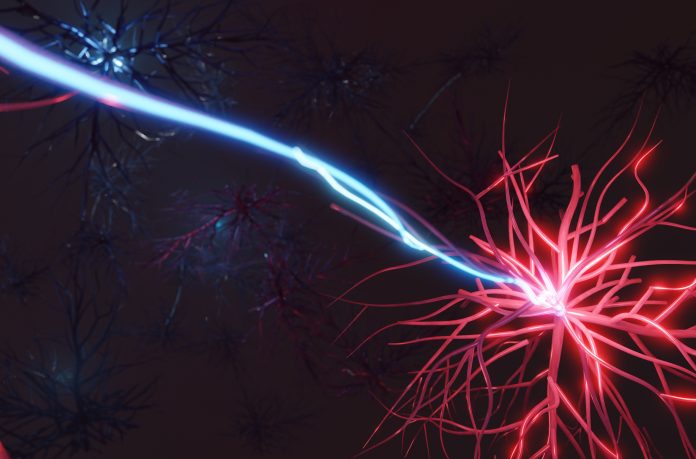Targeted neuromodulation may be a future method to help those with severe, untreatable depression – traditionally, this is used to correct misfiring brain circuits in people with epilepsy or Parkinson’s
Scientists at UC San Francisco’s Dolby Family Center for Mood Disorders have demonstrated a novel personalised neuromodulation approach that was able to provide relief from symptoms of severe treatment-resistant depression within minutes.
Depression is among the most common psychiatric disorders, affecting as many as 264 million people worldwide and leading to hundreds of thousands of deaths per year. But as many as 30% of patients do not respond to standard treatments such as medication or psychotherapy.
Firstly, what is neuromodulation?
According to the International Neuromodulation Society, this is technology that acts directly upon nerves.
It is the alteration of nerve activity by delivering electrical or pharmaceutical agents directly to a target area, which can change how the body feels and acts, instantly.
Neuromodulation devices and treatments are life changing. They affect every area of the body and treat nearly every disease or symptom from headaches to tremors to spinal cord damage to urinary incontinence. It is commonly used to treat Parkinson’s, and now, the scope for using this treatment to handle tough mental health disorders is becoming clear.
Secondly, why has no-one treated depression like this before?
“The brain, like the heart, is an electrical organ, and there is a growing acceptance in the field that the faulty brain networks that cause depression — just like epilepsy or Parkinson’s disease — could be shifted into a healthier state by targeted stimulation,” said Katherine Scangos, MD, PhD, an assistant professor in the Department of Psychiatry and Behavioral Sciences and corresponding author of the new study.
“Prior attempts to develop neuromodulation for depression have always applied stimulation in the same site in all patients, and on a regular schedule that fails to specifically target the pathological brain state.
“We know depression affects different people in very different ways, but the idea of mapping out individualized sites for neuromodulation that match a patient’s particular symptoms had not been well explored.”
The impact of neuromodulation on a life-long sufferer
This patient is a 36-year-old woman who has experienced multiple episodes of severe treatment-resistant depression since childhood. To the team, she describes small coping mechanisms like needlework, which keep her brain from actively chasing negative thoughts. She says that she hasn’t genuinely laughed for five years, finding it difficult to pursue her dreams and her work.
The team used a minimally invasive approach to place 10 intracranial electrode leads into the brain of the first patient enrolled in the trial.
The patient then spent 10 days at the UCSF Helen Diller Medical Center at Parnassus Heights. While she was there, researchers systematically mapped effects of mild stimulation across a number of brain regions that prior research had shown were likely to have an effect on mood.
Essentially, the team got to know her brain
Trying out three different areas, researchers gave her 90 seconds of stimulation. From place to place in the brain, the patient reacted in generally positive ways – but momentarily so. She described a feeling of “neutral alertness” for one area, and “calm pleasure” for stimulation to the orbitofrontal cortex (OFC).
Following up on these areas, the team upped the 90 seconds to 10 minutes. To their surprise, they found that stimulation of each of the three sites improved her symptoms in different ways, depending on the patient’s mental state at the time of stimulation. For example, when she was experiencing anxiety, the patient reported stimulation of the OFC as positive and calming, but if the same stimulation was delivered when she was experiencing decreased energy, it worsened her mood and made her feel excessively drowsy.
“It really was a problem in my brain”
The researchers found that the effects of stimulation could be tailored to the patient’s mood, and that positive effects lasted for hours, well beyond the 40-minute window designed into the study protocol. The patient’s symptoms also got significantly better over the course of the 10-day study, leading to a temporary remission lasting 6 weeks.
“I’ve tried literally everything, and for the first few days I was a little worried that this wasn’t going to work,” the patient recalled.
“But then when they found the right spot, it was like the Pillsbury Doughboy when he gets poked in the tummy and has that involuntary giggle. I hadn’t really laughed at anything for maybe five years, but I suddenly felt a genuine sense of glee and happiness, and the world went from shades of dark gray to just – grinning.
“It struck me so clearly in that moment that my depression wasn’t something I was doing wrong or just needed to try harder to snap out of — it really was a problem in my brain that this stimulation was able to fix. Every time they’d stimulate, I felt like, ‘I’m my old self, I could go back to work, I could do the things I want to do with my life.'”
The patient has returned to work after seven years
The NeuroPace device was implanted in June of 2020 and activated in August, and so far, the study participant has reported that her symptoms have almost completely vanished. In the past seven years, the depression had made it impossible for her to hold a job or even drive.
This is despite significant life stressors like a COVID exposure, helping her parents move out of state, and caring for her mother after a fall.
“2020 was terrible for everyone, and I’ve had some particularly stressful life events, but for the first time in a long time, I feel like I can bob back up again,” she said.
“I can’t tell exactly when the device turns on, but I generally feel more of a sense of clarity, an ability to look at my emotions rationally and apply the tools that I’ve worked on through psychotherapy, and that is so far from where I was before.”
In the trial’s next phase, the patient will switch between six weeks with the device turned on and six weeks with it off, without being aware of which is which, in order to assess possible placebo effects.











